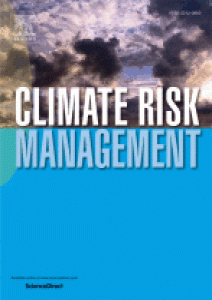

Europe's cross-border trade, human security and financial connections: A climate risk perspective
Climate Risk Management Volume 34, 2021.
As the impacts of climate change begin to take hold, increased attention is being paid to the consequences that might occur remotely from ...
Author(s):
Summary:
Climate Risk Management Volume 34, 2021.
As the impacts of climate change begin to take hold, increased attention is being paid to the consequences that might occur remotely from the location of the initial climatic impact, where impacts and responses are transmitted across one or more borders. As an economy that is highly connected to other regions and countries of the world, the European Union (EU) is potentially exposed to such cross-border impacts.
Here, authors undertake a macro-scale, risk-focused literature and data review to explore the potential impact transmission pathways between the EU and other world regions and countries. They do so across three distinct domains of interest - trade, human security and finance - which are part of complex socio-economic, political and cultural systems and may contribute to mediate or exacerbate risk exposure. Across these domains, we seek to understand the extent to which there has been prior consideration of aspects of climate-related risk exposure relevant to developing an understanding of cross-border impacts. They also provide quantitative evidence of the extent and strength of connectivity between the EU and other world regions.
Their analysis reveals that - within this nascent area of research - there is uncertainty about the dynamics of cross-border impact that will affect whether the EU is in a relatively secure or vulnerable position in comparison with other regions. However, we reveal that risk is likely to be focused in particular ‘hotspots’; defined geographies, for example, that produce materials for EU consumption (e.g. Latin American soybean), hold financial investments (e.g. North America), or are the foci for EU external action (e.g. the Middle East and North Africa region). Importantly, these domains will also interact, and - via the application of a conceptual example of soybean production in Argentina based on a historical drought event - they illustrate that impact and response pathways linked to EU risk exposure may be complex, further heightening the challenge of developing effective policy responses within an uncertain climatic and socioeconomic future.
Keywords
Climate change
EU
European Union
Vulnerability
Transnational impacts
Cascading risk
| Type : | Academic Publication |
|---|---|
| Date : | 02/12/2021 |
| Editor : | Climate Risk Management Volume 34, 2021, 100382 |

